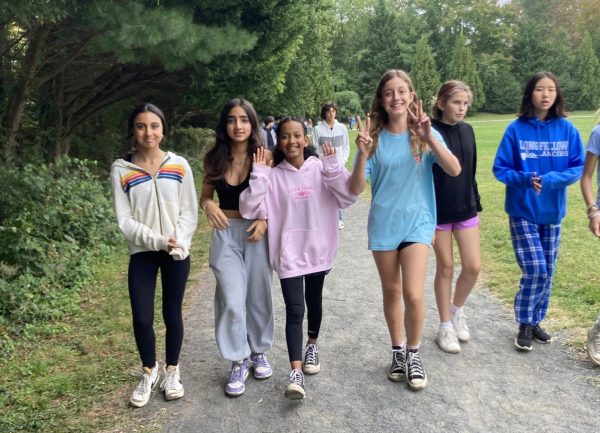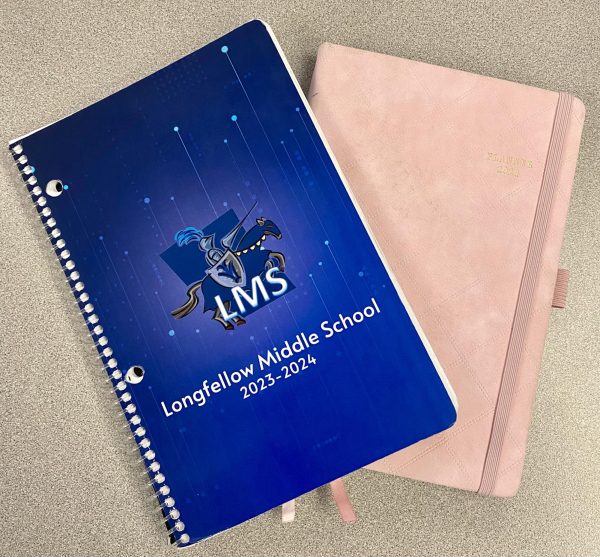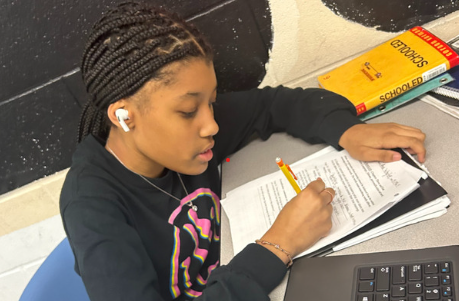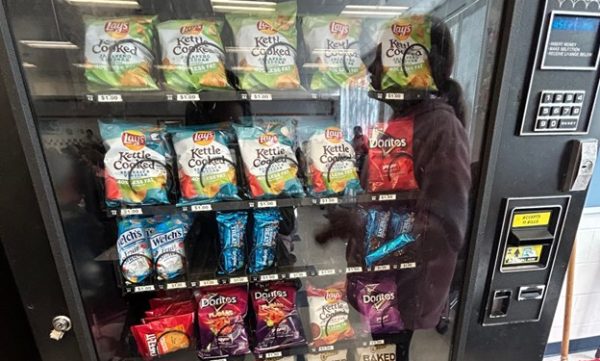Students Shy Away From Turning On Cameras During Distance Learning
Online classes are full of faceless students, many of whom are reluctant to turn on their cameras.
On-camera or off-camera; sitting at a desk or curled up in bed; dressed for the day or in pajamas; kids all over the United States are experiencing virtual school for the first time in history.
Unless specifically asked, most students don’t voluntarily turn on their camera. This means teachers are staring at a screen of blank squares when they are teaching. Is this the best way to learn? The issue of cameras on vs. cameras off is a hot topic this year.
Michelle L., a 7th grader at Longfellow, is among the minority of students who started out voluntarily showing their faces in the virtual classroom. She admitted she would feel much more comfortable if others did the same thing.
“Sometimes I feel embarrassed being the only person turning on their camera in the whole class,” said Michelle.
Keeping cameras on would increase connection and interaction. Students must be more engaged when the teacher can make sure that they are paying attention.
“If you have your camera off, you are more likely to be doing other stuff like going on your phone, which makes it very hard to comprehend the lesson. When the teachers can see you, you have to be paying attention and focusing,” shared Ella Teal, a senior at a high school in Montgomery County.
Teachers will often call on a student and get no response. This leads to the assumption that they simply logged onto class and then left. “Unfortunately, it’s happened more times than I would like. I think that sometimes the kids log on and then go back to doing what they want to be doing, whether it’s sleeping, eating, or playing video games, or whatever it is that prevents them from paying attention to class,” said Mr. Wilson, a 7th grade English teacher at Longfellow.
When cameras are off, it is difficult for teachers to know what the kid is feeling, if they understand, or if they need help.
“When a student is answering and asking a lot of questions, I can tell that they are engaged and that they want to learn, but when they are silent the entire class, it makes me wonder if they are confused or afraid to ask for help or not paying attention at all,” explained Mr. Wilson.
Parents are also aware of this issue and how it is impacting their children. Katie McNamara Brown, a Longfellow parent, pointed out how much harder it is for young people to get the full meaning of a conversation online.
“There is a lot of interpersonal communication that occurs through facial expression that doesn’t necessarily translate the same when you just have an icon, so I think it’s harder for especially younger children to relate,” said Brown. “They probably are not relating at all to just the teacher’s face and then little icons for their friends.”
One hypothesis regarding cameras is that kids are anxious to be on screen. “Some kids get anxious or self-conscious when they see themselves on a video call. This can interfere with their learning as well as their mental health,” according to the Cleveland Clinic, a medical practice offering advice on how to help with virtual learning anxiety. They might not want their rooms to be seen by their peers, or they fear their privacy being invaded. For these reasons and others, cameras are not required in FCPS.
“When you have a really diverse group of kids together in a class, and you require the video to be on, you are going to have people from really different economic groups, and it may also show relatives in the house or other things that are distracting like pets and younger siblings,” Ms. Brown explained.
These things might embarrass a student, and certainly, could cause a distraction, but also, it opens kids up to bullying when they come back to school.
What are possible solutions? “One possible solution is that every student has the same school-issued background. In that case, students would not be able to compare one home environment to another. Another solution is for only teachers to be able to view students’ videos so the students could be engaged without being embarrassed about their peers viewing their backgrounds,” suggests another Longfellow parent, Ashley Lancaster.
In conclusion, some students may not be as engaged without cameras on and enforcing cameras to be on invades privacy. There are problems either way.










